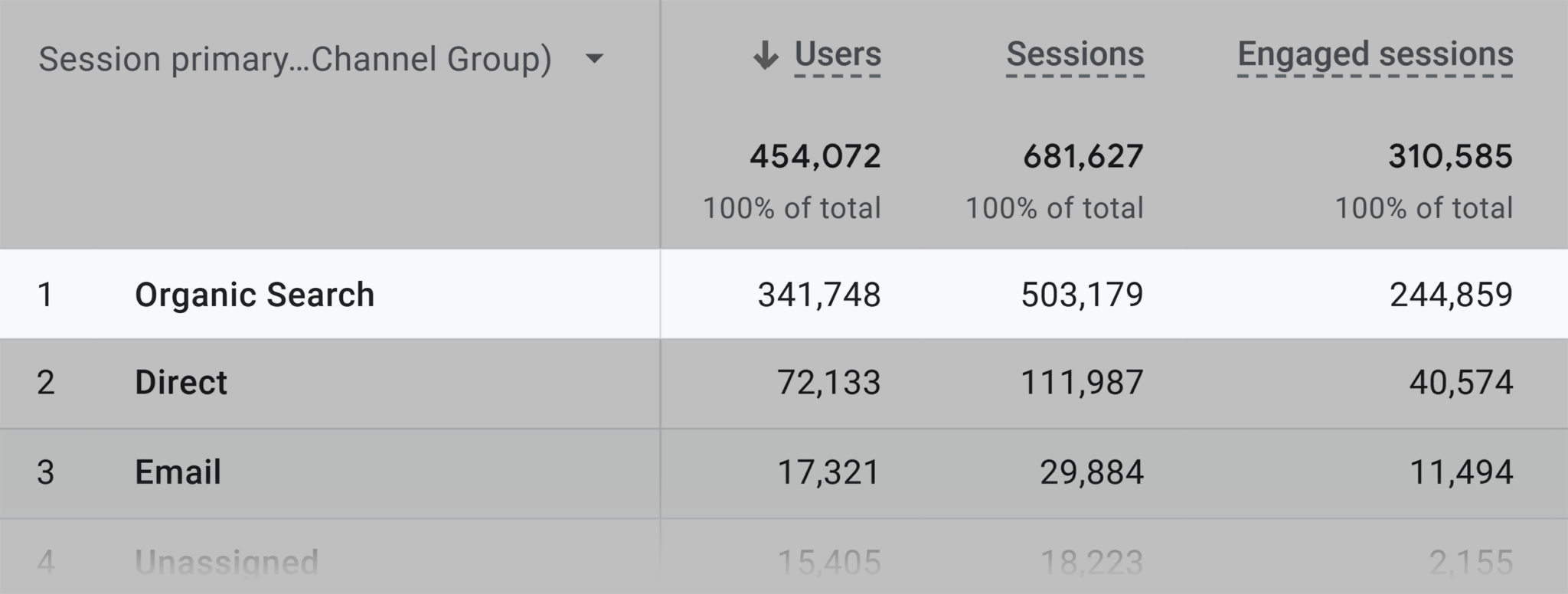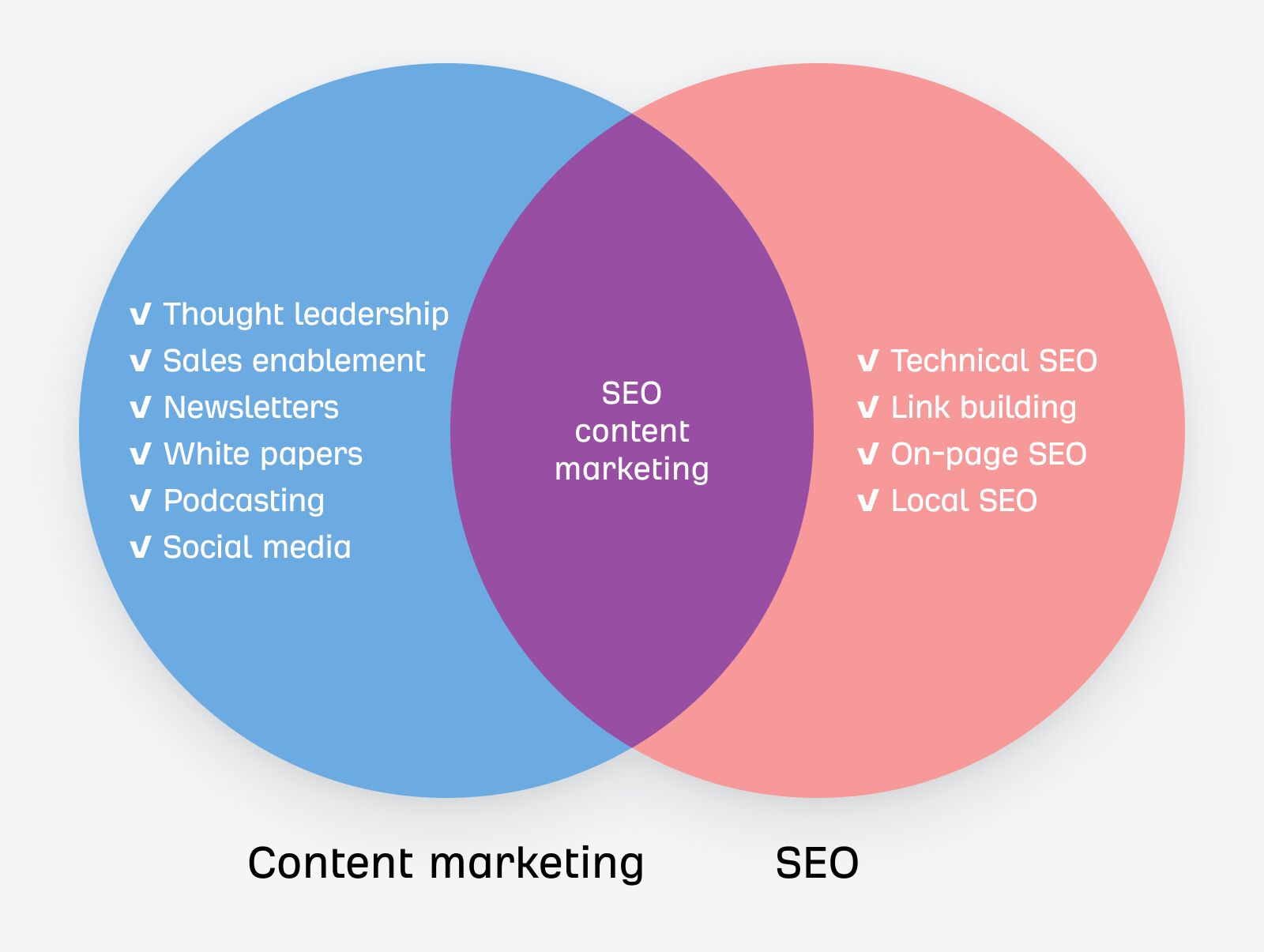If you tried to put together a list of metrics from all resources about SEO topics, you’d easily end up with hundreds of them. It can be overwhelming to make sense of it all. But you only need to focus on a few metrics that really matter for your SEO performance and the results it brings.
In this article, you’ll learn about just four SEO metrics that represent all you need to measure your SEO performance properly. On top of that, we’ll also go through multiple ways to measure impact on how your SEO performs.
Let’s dive in.
How to measure impact on your SEO performance and results
We need to focus on the three main SEO areas here: content creation and optimization, link building, and technical SEO.
Note that improving any of the metrics mentioned here doesn’t guarantee better SEO results. There are almost no guarantees in SEO. But these metrics are as close as it gets to increasing your organic traffic and conversions.
Content metrics
There’s no SEO performance without content that Google is happy to push toward the top of its search results.
But measuring how good your content is and how well it’s optimized to rank at the top of the SERPs are factors that can’t be quantified using a single metric. We’ll have to rely on content quantity.
Content velocity
Content velocity measures the number of content pieces you publish during a given time period. Focus only on content made to drive organic traffic if you also publish other types of content like product updates, company announcements, PPC landing pages, or pages for social media.
If you’re constantly creating great content, increasing your content velocity can be a good indicator of improving your SEO performance. Just note that you shouldn’t focus on new content only, as updating your older content is equally important.

Link building metrics
Backlinks are one of the most important SEO ranking factors.
You can either get them passively through mere exposure of your content to other creators who are happy to refer to you or actively by reaching out to these creators and asking them to link to you.
We can use this passive and active link building distinction for choosing the most appropriate metrics to assess the link building efforts.
New backlinks and referring domains
First, let’s start with passive link acquisition and its high-level overview.
Head over to the “Referring domains” graph in Site Explorer’s Overview report after plugging in your domain to see how you’re growing in this aspect over time:

It’s a good first check because there’s a clear positive correlation between referring domains and organic traffic:

However, a single graph doesn’t necessarily reflect your SEO success. You need to make sure that the websites linking to you are actually good and not just spam. You can do that in the Referring domains report:

This still isn’t a deep dive, though. Links matter on the page level too and, sometimes, building more links from the same domain can be more beneficial than focusing on new referring domains.
You’ll need to head over to the Backlinks report for that:

Assessing link quality itself is too complex to dive into here, so let me point you to our link building guide that covers all the aspects of high-quality backlinks.
Newly built backlinks
Link building isn’t easy. But at least its tracking is pretty straightforward when you engage in its active form.
That’s because you need to do link prospecting before you can even start reaching out to people and asking them to link to you. It’s the process of figuring out what backlinks you want to get. This ensures that you’re putting your time and effort into getting links that are really worth it.
All you need to do to measure your results here is to indicate “link status” in your link prospecting system. I used to do this in simple Google Sheets back when I was doing the outreach myself, and there’s no need to overcomplicate things for most:

You’ll either learn that your outreach was successful by receiving a positive reply or discovering the desired backlink in the Backlinks report. You can set up new backlink alerts to make this easier for you.

Technical SEO metrics
Last but not least, we’re in the SEO discipline where a lot of work can’t be directly attributed to improvements in performance. Well, unless the technical SEO problems are so severe that it’s completely blocking your way to your desired results.
Or, as my colleague, Patrick Stox, puts it:
Technical SEO is the most important part of SEO until it isn’t. Pages need to be crawlable and indexable to even have a chance at ranking, but many other activities will have minimal impact compared to content and links.
That said, there are three ways you can quantify your technical SEO efforts.
Page indexing errors in Google Search Console
These errors are anything that prevents your pages from being indexed when it’s not done intentionally using the noindex robots meta tag.
There are many reasons why Google may deindex your pages or refuse to index them straight away. Keeping the number of these errors to a minimum is a sign of a solid technical SEO foundation.
You can find these errors in your GSC account in the Pages report under the Indexing tab. Make sure to switch the view scope to “All submitted pages” to only show errors for pages submitted in your sitemaps:

The lower the number of non-indexed pages, the better—given that sitemaps should only contain URLs that you want Google to crawl and index. Of course, this should be proportional to the size of the website. If you have millions of URLs, then (tens of) thousands of unindexed pages can be considered natural.
When you scroll down, you’ll see the reasons why those pages aren’t in the index:

You can click through those reasons to see a list of URLs affected by that error with a link to learn more about it. There’s also usually an instruction on how to fix it.
Health Score in Ahrefs’ Site Audit
Ahrefs’ Site Audit has a metric called Health Score that reflects the proportion of internal URLs on your website that don’t have technical SEO errors:

The Health Score offers a great proxy for your overall state of technical SEO. All you need is to set up a Site Audit project and start a crawl. You can do that for free as a part of Ahrefs Webmaster Tools.
Every time AhrefsBot finishes crawling your website, it will update your Health Score and report accordingly.
However, keep in mind that Health Score can’t reflect and qualify the importance of each error in the context of your website. Let me illustrate this issue with an example:
A 404 HTTP status code is one of those technical SEO issues that will trigger an error in any crawler. Showing that a resource wasn’t found is usually bad for both visitors and search engines. But there’s a huge difference between having a 404 on a well-converting page with high organic traffic and one that’s not very important.
For this reason, it’s always a good idea to dive deeper into the specific issues behind your Health Score.
Issues in Ahrefs’ Site Audit
To see the specific technical SEO issues, their importance, and how many pages they affect, go to the All issues report in Site Audit:

You can then click on the tooltip to learn what you need to know about the issue and how to fix it.

Then click through to see the affected pages and assess how the specific issue is hindering the potential success of those pages in the list.
Final thoughts
Even though we’ve gone through quite a few metrics to properly measure and evaluate your SEO performance, I want to wrap things up by telling you to sometimes take a step back.
Don’t refresh your keyword rankings for a piece you published a few weeks ago. Rather, give your content and other SEO efforts the time to show results. According to our survey, it takes three to six months on average.
Once you start getting comfortable analyzing SEO metrics, you should start creating comprehensive SEO reports customized to your business needs to take it to the next level.
Got any questions? Ping me on Twitter.
Content Copyrights Belong to The Author. All Rights Reserved.
We're A Dallas Digital Marketing Agency That is Experts At Social Media Marketing, Website Design and Emarketing and Promotion.




